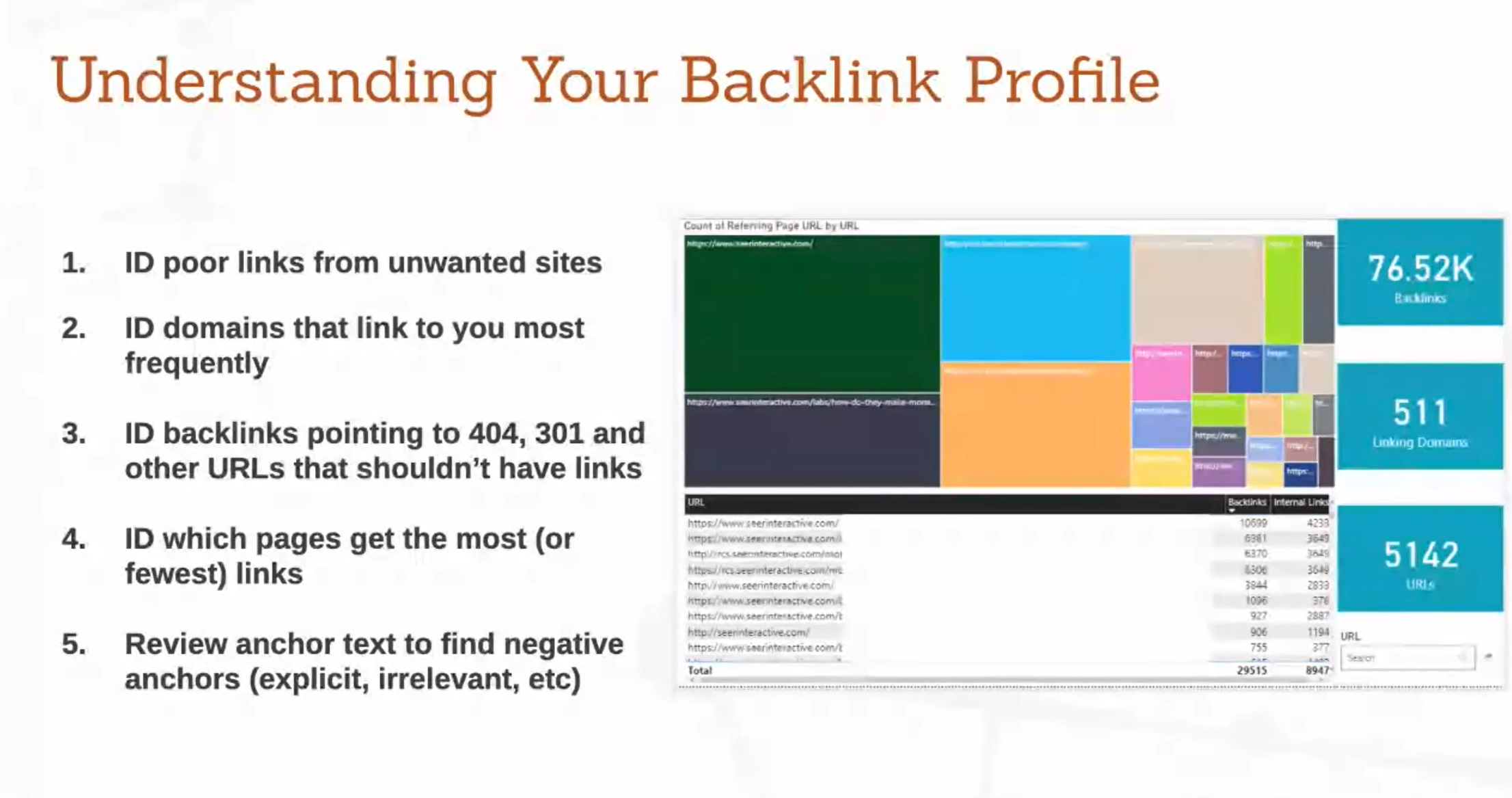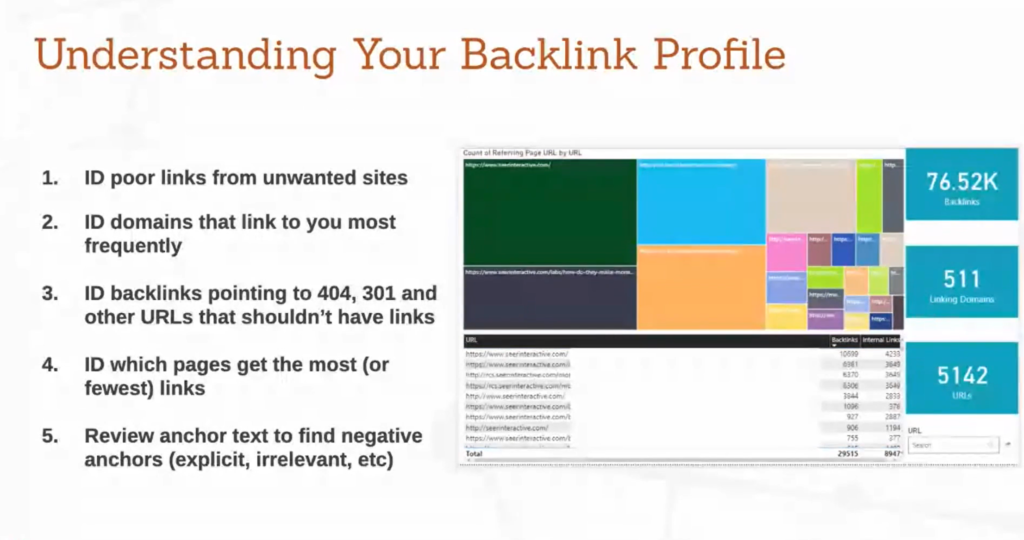Your backlinks are a link from any other site to your page — and they definitely impact your SEO. Backlinking is a common optimization tactic, but it can be time consuming: building inbound links requires outreach and, frankly, might not be your favorite thing in the world. Should you spend time building this resource? In a presentation at Found Conference, Zaine Clark talks up backlink auditing — and whether a backlink program is worth your time. Check out findings from our presenter in our multi-part post on conducting a backlink audit.
Want to check out the Found Conference presentations? View them here.
What are backlinks and why do they matter?
Backlinks, or inbound links, link from one domain to another. Websites are crawled by search engines using links to navigate from domain to domain, and page to page, as they’re added to a search engine’s index. Unless your site contains only one page, you have some sort of internal linking strategy to help both users and bots navigate your page — navigation, content links, anything that transfers traffic from one page to another.
Conversely, backlinks transfer that traffic from off-site to your content. Zaine says to imagine backlinks as a linking atlas: bots travel through links to connect content. While many “roads” lead to popular websites, bots travel highways, backroads and state routes to connect to smaller, less-populated areas of the internet.
If you’re an SEO, it’s likely that you’ve considered a backlinking strategy as well. Why? Because search engines see backlinks as a “vote of confidence” — a site with more backlinks is typically seen as being more authoritative. Of course, hundreds of other factors play into a site’s authority score, too. Backlinking is an important piece of SEO, but not the one place to focus all of your attention.
What should you look for when performing a backlink audit?
You can use a variety of tools to check out your own backlinks. For an initial audit, Google Search Console’s Links Report details external links and top-linking websites. You can also try any number of free link checkers (like this one offered by Ahrefs) or platforms like SEMRush to see who’s linked to your site, and what pages they’re linking to. So, what should you do during a backlink audit?
Identify poor links from unwanted sites.
In this situation, “unwanted” means “irrelevant.” If Nike were to create a piece of content about shoes and link to your cleaning-supply website, that’s not a great link — even though it comes from an authoritative source. It just isn’t relevant content. Links stemming from scammy websites and link farms are also on your list to avoid. Some backlink checkers will identify those problematic sites for you, and Google Search Console will alert you to issues that may be manually reviewed.
If you think Google is dinging your site due to unnatural links from spammy or fake sites, Google gives you the option to create a list of links to disavow. However, Zaine points out that disavow files aren’t appropriate for every situation — and that, based on Google’s most recent guidance, they aren’t necessary on most sites. Google says that you should use a disavow file only if you 1) have a large number of spammy links pointing to your site and 2) believe that those links will cause manual action from a human reviewer).
Identify domains that link to you most frequently.
While cutting down on poor links is all about reducing threat to your SEO, there are also areas of opportunity to be discovered in your backlink audits. By identifying the domains that most frequently link to your site, you may uncover some extremely usable data for the future. Maybe your target market is reading a ton from a particular site, or maybe your users are coming in off of sites from a specific industry or area. Are there areas where you can capitalize upon from a content creation standpoint? SEO is all about user intent — use your inbound links to help you see why users are visiting your site, and what they hope to find there.
Identify backlinks pointing to 404, 301, and other URLs that shouldn’t be indexed.
If a human or bot follows a broken link on your site, that traffic could negatively impact your SEO. Check to make sure that you haven’t unpublished pages which should be live, and install noindex tags on those pages that shouldn’t be indexed. And, again, use a disavow file only if you need to correct a manual action.
Identify the pages with the most (and fewest) links.
You’ll want to see which pages feature the highest numbers of backlinks. Typically it’s the homepage, but you may find that certain styles of writing or types of content outperform others in backlinking. You can use this information to determine opportunity, just as you might use traffic data as a part of your decision-making process when prioritizing types of new content to create. If you have an asset that receives solid backlinking engagement — say, a video showcasing a particular product — highlighting the importance of backlinking is a great way to pitch similar content for other products, brands, or pages.
You should also note that links coming in from unnatural sources (ie, link farms) don’t provide authority, and may actually get you downvoted by Google’s algorithms or human reviewers (as we just discussed). So, don’t only look at what pages have the most links — look at which pages have the most quality links. Then, use that data to your advantage!
Review anchor text to find negative anchors.
There are plenty of link farms living across the web! That means plenty of r-rated, repeat, or irrelevant links coming back to your site. You may find links to your site that use explicit language (Search Console is great at notifying us of that issue), or that are simply irrelevant. It’s a good idea to keep an eye on those links, and develop potential strategies for reducing them.
The “click here” or “read here” anchor text isn’t ideal: it’s not very well-optimized, and doesn’t tell the user what they’ll land on. If you have means to influence those snippets of anchor text, try to make them more specific.

So: What now in my backlinking strategy?
Now that you’ve run these analytics, you want to decide how to use them. Is backlinking worth your time and trouble? Once you’ve reviewed your backlinks, you’re likely asking yourself: do I really need to spend time building links? Do you need to spend more resources to build assets through backlinking? The answer, of course, depends on your site and industry. Check back for our next post to see what our backlink export has to say.

